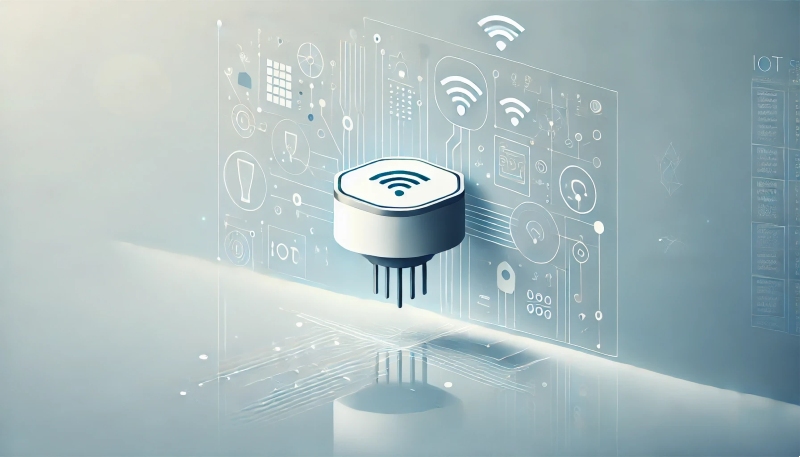Next-Generation IoT Sensors: Market Trends, Technologies, and Industry Competition
The Internet of Things (IoT) is revolutionizing industries across the globe by enabling smart, connected devices that gather and transmit data in real time. At the core of this transformation are next-generation IoT sensors, which provide the necessary data to fuel intelligent decision-making and automation. These advanced sensors are more efficient, accurate, and scalable than ever before, propelling the growth of the IoT ecosystem. In this blog, we explore the current market for next-generation IoT sensors, key technologies driving innovation, the competitive landscape, and recent developments shaping this rapidly evolving field.
Market Overview
The global Next-Generation IoT sensor market is experiencing exponential growth, driven by increasing demand across various sectors such as manufacturing, healthcare, agriculture, and smart cities. The market is projected to grow at a CAGR of over 50.2% between 2024 and 2031, reaching a valuation of more than $66.14 billion by the end of the decade. As more industries embrace automation and digital transformation, the need for real-time data and analytics from IoT sensors is accelerating.
Key factors contributing to this growth include the expansion of smart homes, advancements in 5G networks, and the increasing use of IoT sensors in autonomous vehicles and industrial automation. The market is also benefiting from growing environmental concerns, which have led to increased adoption of IoT sensors in energy-efficient systems, smart grids, and water management.
Key Technologies Behind Next-Generation IoT Sensors
- MEMS (Micro-Electro-Mechanical Systems) Sensors: MEMS technology plays a crucial role in the miniaturization and cost-efficiency of IoT sensors. These sensors are widely used in smartphones, wearables, and industrial IoT applications. MEMS sensors can detect motion, pressure, temperature, and acceleration, making them essential for applications that require real-time monitoring and control.
- AI-Powered Sensors: Artificial intelligence (AI) is transforming IoT sensors by enabling more intelligent data processing at the edge. AI-powered sensors can analyze data locally, reducing latency and bandwidth usage while improving decision-making capabilities. These sensors are particularly valuable in mission-critical applications such as healthcare and autonomous driving, where real-time responses are vital.
- Energy Harvesting: One of the challenges of deploying IoT sensors at scale is ensuring they remain powered over long periods. Next-generation sensors often incorporate energy-harvesting technologies that use ambient energy from light, motion, or heat to power themselves. This innovation is crucial for remote or hard-to-reach areas, as it eliminates the need for frequent battery replacements.
- Multi-Sensor Fusion: Multi-sensor fusion technology integrates data from multiple sensors to provide more accurate and reliable information. For example, in industrial automation, combining data from temperature, humidity, and motion sensors enables more precise control of equipment, improving productivity and reducing maintenance costs.
- Wireless Connectivity: With the rise of 5G and LPWAN (Low Power Wide Area Network) technologies, next-generation IoT sensors can transmit data more efficiently over longer distances with minimal energy consumption. Wireless connectivity is critical for applications like smart agriculture, where sensors are often deployed across vast fields, and in smart cities, where scalability is essential.
Competitive Landscape
The IoT sensor market is highly competitive, with numerous players developing innovative solutions to meet the growing demand. Leading companies like Texas Instruments, Honeywell International, Bosch Sensortec, STMicroelectronics, and NXP Semiconductors dominate the landscape by offering a wide range of sensors for various industries.
- Texas Instruments focuses on producing low-power sensors with enhanced accuracy for industrial and automotive applications. Their IoT sensor solutions are known for their durability and energy efficiency, making them a popular choice in smart factories and autonomous vehicles.
- Bosch Sensortec is a key player in the consumer electronics and wearables segment. The company’s MEMS sensors are used in smartphones, fitness trackers, and virtual reality headsets, offering precise motion tracking and environmental sensing.
- STMicroelectronics has established itself as a leader in smart home applications, offering a variety of sensors for motion, environmental, and proximity sensing. Their AI-powered sensors are designed to enable advanced home automation and security systems.
- Honeywell International offers a diverse portfolio of IoT sensors with a focus on industrial applications such as process automation, energy management, and environmental monitoring.
- NXP Semiconductors specializes in automotive IoT sensors, offering innovative solutions for autonomous vehicles and smart transportation systems.
Recent Developments in Next-Generation IoT Sensors
- Bosch Sensortec recently launched a new AI-powered sensor hub that enables more complex and accurate environmental data analysis at the edge, reducing power consumption for IoT devices.
- STMicroelectronics introduced a new family of MEMS-based motion sensors designed for low-power applications, such as wearables and remote monitoring systems, providing improved energy efficiency and accuracy.
- Texas Instruments announced advancements in its energy-harvesting IoT sensor technology, allowing for longer operation times in remote and industrial settings without requiring frequent battery changes.
- Honeywell developed a new line of environmental IoT sensors that combine multi-sensor fusion and AI to monitor air quality, temperature, and humidity in smart buildings and industrial environments.
Conclusion
Next-generation IoT sensors are at the heart of the ongoing transformation in industries ranging from manufacturing to healthcare and smart cities. With advancements in MEMS, AI, energy harvesting, and wireless connectivity, these sensors are becoming smarter, more efficient, and more reliable. As competition intensifies, major players continue to innovate, driving the growth of IoT and creating endless possibilities for connected devices in the digital age.
